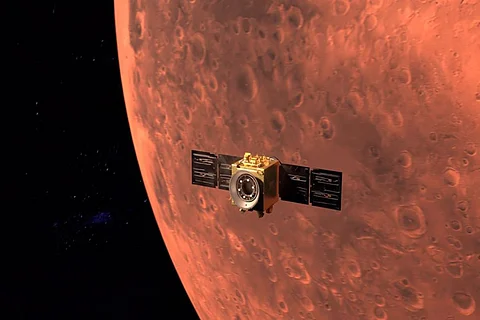

The United Arab Emirates’s Hope Mission to Mars has successfully entered the orbit around the Red Planet on Tuesday. The probe, referred to as “Al Amal” — meaning hope in Arabic — is the first Arab interplanetary mission. The probe is on a two-year mission to study the atmosphere and take imagery of the planet. Here are six things to know about the mission.
> The Mars mission probe, funded by the UAE government, was launched on July 20, 2020, using a Mitsubishi Heavy Industries (MHI) H2A rocket. The Hope Mars Mission was first announced in 2014, reported Gulf News.
> The probe was launched when both Earth and Mars were in optimum alignment for a brief period that occurs every 26 months. Such an optimum window opened on July 14, 2020, and the Mars Hope probe was launched on July 20, 2020, from Japan's Tanegahima Space Centre.
> The probe journeyed on for seven months covering 495 million kilometres to reach the Mars orbit. It will now follow an elliptical orbit, going as close as 1,000 kilometres above the surface of Mars at one point and as far as 49,380 km away from it.
> The Mars Hope probe weights just 1.5 tonnes, about the same size as an SUV. It is expected to complete one orbit around the planet every 55 hours.
> The probe carries three scientific instruments -- an Exploration Imager, which is a multiband camera that will take high-resolution pictures of Mars that will help study the planet's lower atmosphere; an Ultraviolet Spectrometer that will detect the ultraviolet wavelength which will help understand the levels of carbon monoxide and oxygen in the Mars atmosphere. The probe also has an Infrared Spectrometer that will measure dust, ice clouds and water.
> The probe is on a two-year mission and the mission life can be extended to 2025.